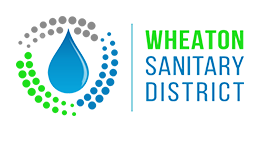[vc_row][vc_column width=”2/3″][vc_custom_heading text=”General Information About Wheaton Sanitary District” google_fonts=”font_family:Montserrat%3Aregular%2C700|font_style:400%20regular%3A400%3Anormal”][vc_column_text]Wheaton Sanitary District was created in 1925 under the Sanitary District Act of 1917. In 1926, it began treating wastewater on a 35 acre site located on Shaffner Road just north of Mack Road.
Contrary to what the name might imply, Wheaton Sanitary District is not part of the City of Wheaton. It is a separate government agency that treats wastewater from areas that naturally drain to the wastewater plant.
Wheaton Sanitary District treats wastewater for a population of about 63,000 spread over about 9,000 acres including most of Wheaton, southern Carol Stream, a small portion of Glen Ellyn, a small portion of Winfield, and unincorporated areas of DuPage County, including the County complex.
The District is governed by a three-member Board of Trustees appointed by the DuPage County Board Chairman. The Board meets once a month, generally on the second Wednesday of each month, in the District’s administration building located at the wastewater treatment plant. Board meetings are open to the public.
Although it has the authority, the District does not levy taxes. Most of the revenue for operations is generated from user charges, based on water consumption. The balance of revenue comes from connection permit fees, septage disposal, leachate disposal, and chemical toilet disposal.
To reduce the potential of oil being dumped into the sanitary sewer system, the District provides disposal for used motor oil, oil filters, and cooking oil Monday through Friday from 7:30am to 3:00pm at no charge.
The District has about 67 miles of sewer lines, 1,600 manholes, and 2 lift stations. Most of the lines are small with about 70% of the lines being less than 12 inches in diameter. Relative to age, about 45% of the lines are less than 25 years old, and 97% of the lines are less than 50 years old. Another 120 miles of sewer lines, owned by municipalities, are connected to the District’s interceptors.[/vc_column_text][/vc_column][vc_column width=”1/3″][vc_single_image image=”237″ img_size=”large” alignment=”center”][vc_column_text][/vc_column_text][vc_column_text][/vc_column_text][vc_single_image image=”229″ img_size=”large” alignment=”center” style=”vc_box_rounded”][vc_separator][/vc_column][/vc_row]

